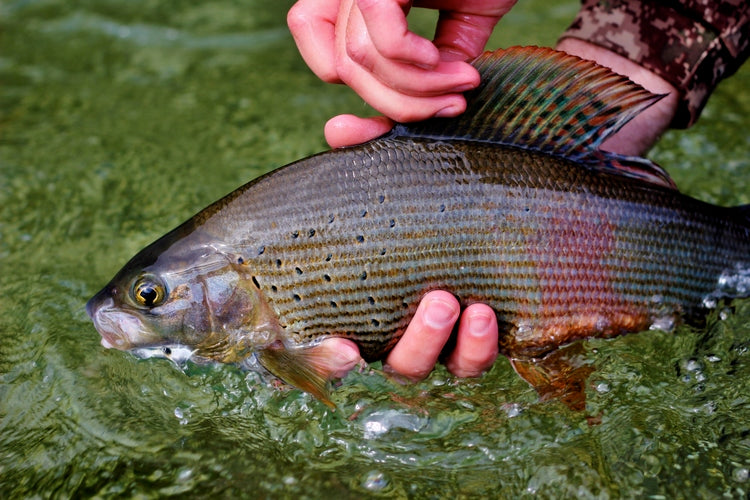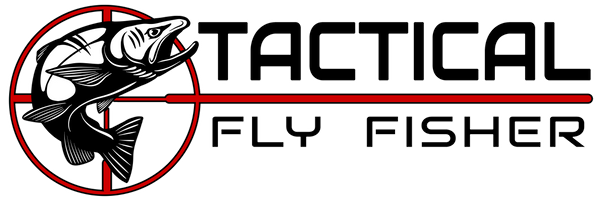
BBS (BIOT BACKED STONE) FLY TYING TUTORIAL
Share
I've gone through a lot of fly tying and fishing phases over the years. I've lived the "match the hatch" imitation based approach to fly fishing and I've also lived in the attraction based world. Oftentimes I have one foot planted in each ideology; simultaneously enjoying and disdaining my duality within the infinite spectrum of tying strategies employed in relentless piscatorial pursuit. Seven or eight years ago, with my foot nudging slightly over the line into imitation, I was looking for a classy but effective way to imitate the two toned appearance of most stonefly nymphs. For a long time during the tailwater focused days of my youth, I tied a baetis pattern where I used a synthetic yarn pulled over the abdomen to provide the tail, as well as color contrast. I decided the same technique could be applied to stonefly nymphs, but with a different material, goose biots. The original Biot-Backed Stone (BBS) used copper wire for the rib, but I found that wire cut through the biots and greatly reduced the durability of the fly. I've tried several ribbing substitutions and medium sized D-rib seems to work the best at providing adequate segmentation and durability for the fly.
I have fished this pattern with success across the United States. Its reach has even extended to a trip to New Zealand's North Island in 2007 after the Oceania Fly Fishing Championships, which took place in Tasmania. It was also successful for me on the Sava River in Slovenia at the 2012 World Fly Fishing Championships. During practice, I was fishing a deep fast slot with my teammate Lance Egan. He caught several trout and an exceptional grayling from the slot with a large rubberlegged stonefly. Even though we did not find stoneflies in the rivers there, the one fly only fishing regulation in Slovenia demanded a very heavy fly at times and stoneflies provided a proper vessel to meet the need. After witnessing Lance's success, I tied up some very large and heavy BBS nymphs for the Sava during the tournament and caught several fish on them in a difficult beat.
Lance Egan hand modeling a beautiful grayling he caught on a stonefly in Slovenia's Sava River.
In addition to trout, I also had success with the BBS for steelhead several days this fall. On one trip in early November, my friends Connor Murphy, Gilbert Rowley, and Ben Swaner joined me for some steelhead fishing on my local rivers. One river was very low and clear and I had caught several fish on the Magneto Stone. However, I fished to a couple of steelhead with no success, which Gilbert and Connor were spotting for me from a high boulder. Earlier Gilbert had caught a couple of fish on his Rowley stone, in an imitative color scheme. Spurred by his success, I re-rigged and added a 3rd fly with the BBS on the point. On my second drift I hooked a steelhead in the 30-32" class. Sadly I proceeded to lose it. Thankfully, I caught one more steelhead on the BBS afterward, albeit much smaller, which slightly eased my pain.
A steelhead which fell to the BBS.
In addition to this color scheme I also tie the BBS to imitate salmonfly, skwala, and yellow sally stonefly nymphs.
The recipe is below. Keep scrolling for purchase links to the materials and tools:
- Hook: Barbless streamer, nymph, or jig hooks in size 10-6. In our store you can choose from the Hanak 230, Hanak 950, Hanak 400, Fasna F-415, Fulling Mill 5045 or Orientsun 7246.
- Bead: Gold Tactical Fly Fisher Slotted Tungsten 3.3 or 3.8 mm
- Thread: Camel 8/0 Uni, Brown 8/0 Semperfli, or Brown 8/0 Veevus
- Weight: 0.025" lead wire
- Ribbing: Hareline D-Rib Small Dark Golden Stone or Brown
- Dubbing: Ginger Hareline Dubbin
- Shellback and Wingcase: UV2 goose biots brown, Fulling Mill premium selected goose biots, Contiflies stripped goose biots brown
- Rubber Legs: Brown Life-flex or MFC Barred Sexi-Floss
Tools Used:


